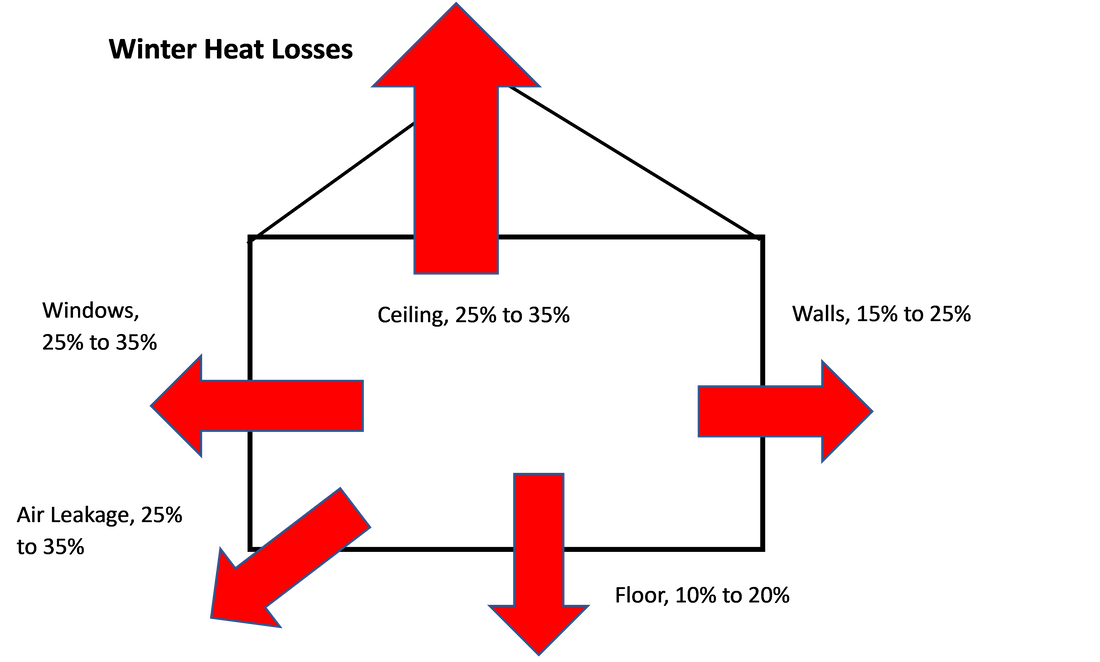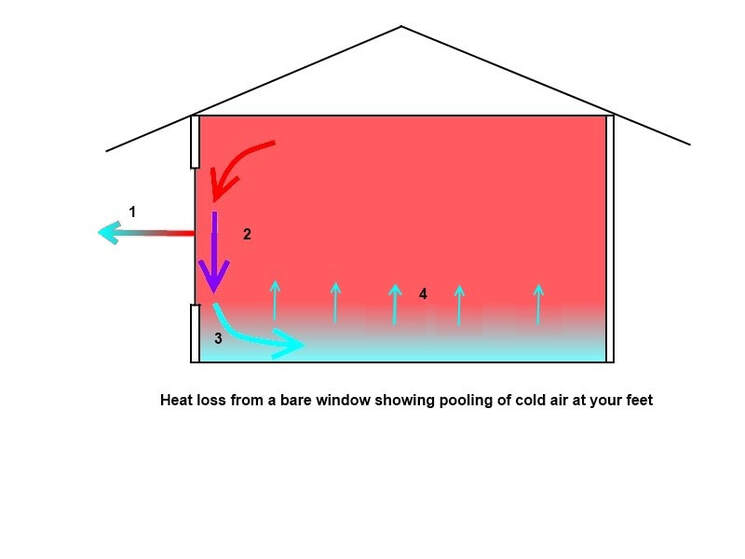Author: CLIVE BLANCHARDClive is an expert on achieving home energy efficiency at low cost so you can save money in comfort. Archives
July 2024
Categories |
Back to Blog
More on keeping warm16/5/2023  Keeping warm is usually the largest energy user (and cost), especially in Southern Australia. Accordingly, it is a good place to start for saving money, improving comfort and reducing greenhouse gas emissions. If you were outside and you wanted to keep warm on a cold day, you would wrap yourself up in warm clothes, stand out of the wind and try and catch the sun if there is any. As a last resort you would light a fire. Fundamentally, this is what you do to a house to keep warm. For a house the warm clothes are the insulation (ceiling insulation, curtains etc), standing out of the wind is weatherstripping the home so cold drafts don’t come in, catching the sun is having north facing windows to get warmth from the winter sun and lighting a fire is having some form of heater. As in my analogy, lighting the fire is the last resort because that produces greenhouse gases and is an ongoing expense. Let’s look at these elements. The first is insulation. If you have an older existing home, it is unlikely that your home is well insulated. The order of importance of insulation is generally:
Your options may be limited by renting or financial constraints. However, look at your insulation needs in the above order. For your clothing in winter, ensure you have long sleeves and either long pants or tights to keep your legs warm. More on this in Winter Comfort If the insulation in the ceiling doesn’t at least come up to the ceiling joists, I recommend that you add more. In cathedral ceilings or flat rooves, consider blown in insulation if lifting the roof to get batts in is too hard. More on ceiling insulation including faults that may be reducing the performance of the insulation you have, can be found in Get Insulation Right Window insulation options are extensive, and should be considered with both summer and winter in mind and depend a lot on the direction the window faces. Basically, in winter you want to keep the heat in, but let sunlight in when it is available, but in summer you want to keep heat out, in particular direct sunlight and at night allow built up heat to escape. Window options can include blinds, curtains, add on glazing and even replacing windows with double glazing if the frames are deteriorated. More on this in Winter Comfort Insulating walls is generally something that can only be done by a professional unless you are replacing either the external cladding or the internal lining. This means it can be expensive and it may be worth getting a professional energy efficiency report before committing any money to verify if that is the most cost-effective approach. Floor insulation also tends to be expensive and whether it is worthwhile depends on the performance of the rest of the house, so again I recommend a professional energy efficiency report if you are contemplating it. For information on weatherstripping, refer stop-air-leaks-in-your-home
0 Comments
Read More
Back to Blog
Top twelve free ways to save energy5/5/2023
Back to Blog
Winter Comfort2/5/2023  Winter comfort is influenced by a variety of factors beyond just temperature. While obvious factors like temperature affect comfort, there are also subtler ones that play a role. For instance, many Australian homes suffer from the "hot head/cold feet" syndrome, which can be exacerbated by several factors. One of the primary culprits is poor insulation in the walls and windows of homes. As cold air sinks, it accumulates on the floor, resulting in a pool of cold air at feet level. This happens because the window loses heat to the outside air (1), causing the air next to the window to get cold and sink to the floor (2). This causes a pool of cold air to collect at your feet (3). If no heat is added and the air isn’t stirred up by a fan, the pool of cold air will gradually thicken (4). From this we can see that we can reduce this problem by reducing the heat loss through the window with curtains, double glazing, roller shutters or preferably a combination of these. Drafts caused by air leaks under doors can also contribute to this issue. Flued gas room heaters can worsen the problem by dragging cold air across the floor as they take air from the room. (An unflued room gas heater is an even bigger problem, because you need to ensure your home is sufficiently leaky so that carbon dioxide, carbon monoxide and other pollutants from the burning gas are kept to a safe level.) Additionally, radiation from cold windows can make one side of the body cold while the other remains hot. Despite the size of the heater used, these issues can still prevent individuals from achieving optimal comfort. There are some obvious actions you can take to reduce these issues, for example, install high performance curtains and/or change to double glazing, insulate your walls, install door and window seals etc. If you have an unflued room gas heater, changing it to a reverse cycle air conditioner is generally a priority. These actions should be supplemented with wearing the right clothes for the season. Wear comfortable but warm clothes. Generally, the thicker the clothes, the warmer they will be. Wearing lots of layers also helps because they stop direct transmission of the heat and allow you to change your clothing level, by say putting on a jumper in the evening. However, other than the door and window seals (which are unlikely to eliminate the problem by themselves) all these items are expensive. The most effective items may not be obvious. To make sure you are getting the best bang for your buck, it is worthwhile getting an energy assessment by an experienced energy assessor. |
- Home
- Energy Audits
- Scorecard
- New homes
- Passive House
- FAQ Passive House/EnerPHit
- Low cost savings blog
- Save Newsletter
- Architect/builder services
- FAQ 7-Star
- NCC Newsletter
- NCC 2022 Blog
- Greenhouse gases
- Why us
- Contact
- NCC Signed up
- Save Signed up
- Solar
- Gift Cards
- Enquiry thanks
- Sell a home
- Needs Survey
- Home
- Energy Audits
- Scorecard
- New homes
- Passive House
- FAQ Passive House/EnerPHit
- Low cost savings blog
- Save Newsletter
- Architect/builder services
- FAQ 7-Star
- NCC Newsletter
- NCC 2022 Blog
- Greenhouse gases
- Why us
- Contact
- NCC Signed up
- Save Signed up
- Solar
- Gift Cards
- Enquiry thanks
- Sell a home
- Needs Survey
- Home
- Energy Audits
- Scorecard
- New homes
- Passive House
- FAQ Passive House/EnerPHit
- Low cost savings blog
- Save Newsletter
- Architect/builder services
- FAQ 7-Star
- NCC Newsletter
- NCC 2022 Blog
- Greenhouse gases
- Why us
- Contact
- NCC Signed up
- Save Signed up
- Solar
- Gift Cards
- Enquiry thanks
- Sell a home
- Needs Survey
|
About Your Low Energy Home
At Your Low energy home our mission is to help you reduce greenhouse gases and running costs of your home. This applies to: Our primary goal is to help people make the most cost-effective decisions to reduce greenhouse gas emissions. Our objective is to work with you to achieve your goals at the level of expenditure which is comfortable for you. This can be achieved while increasing comfort and amenity. |
|

 RSS Feed
RSS Feed